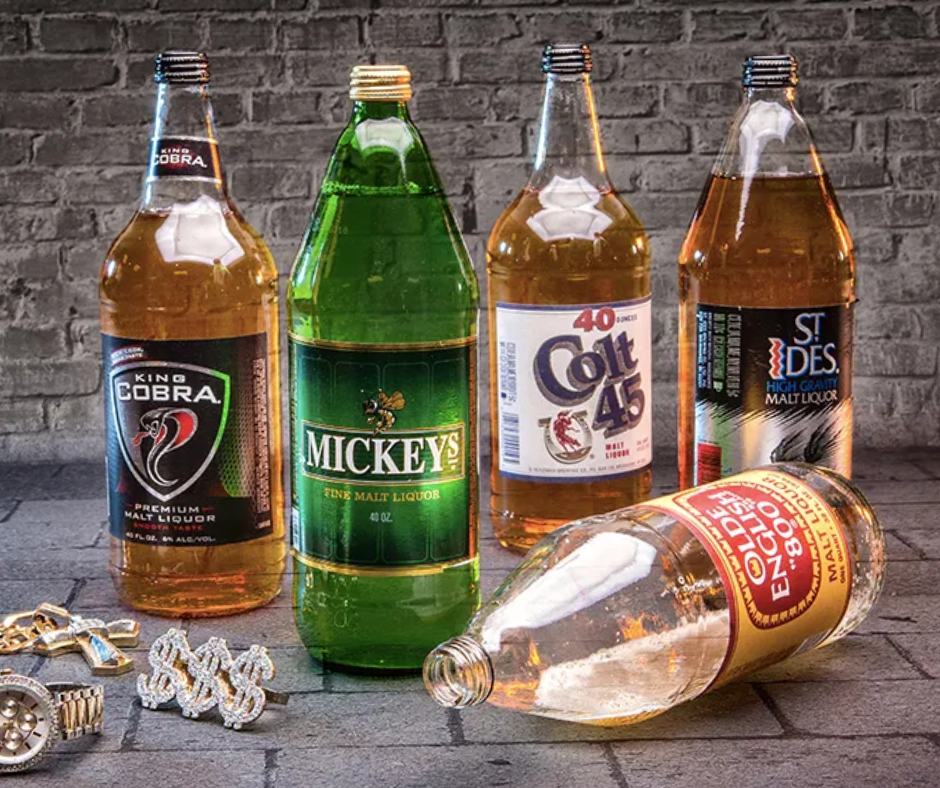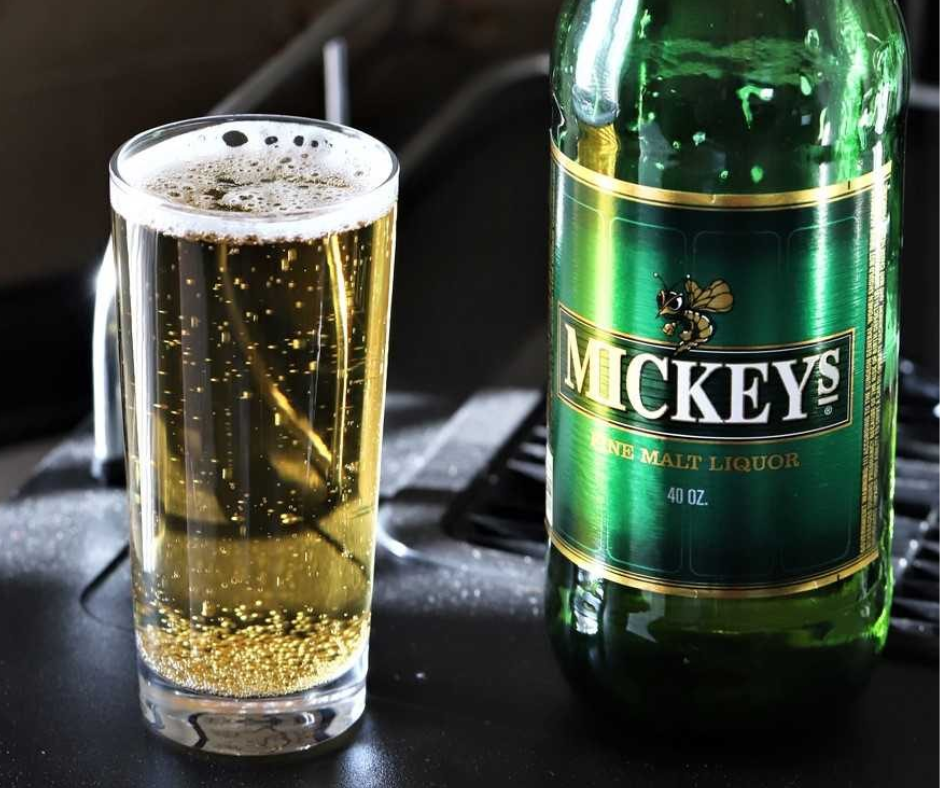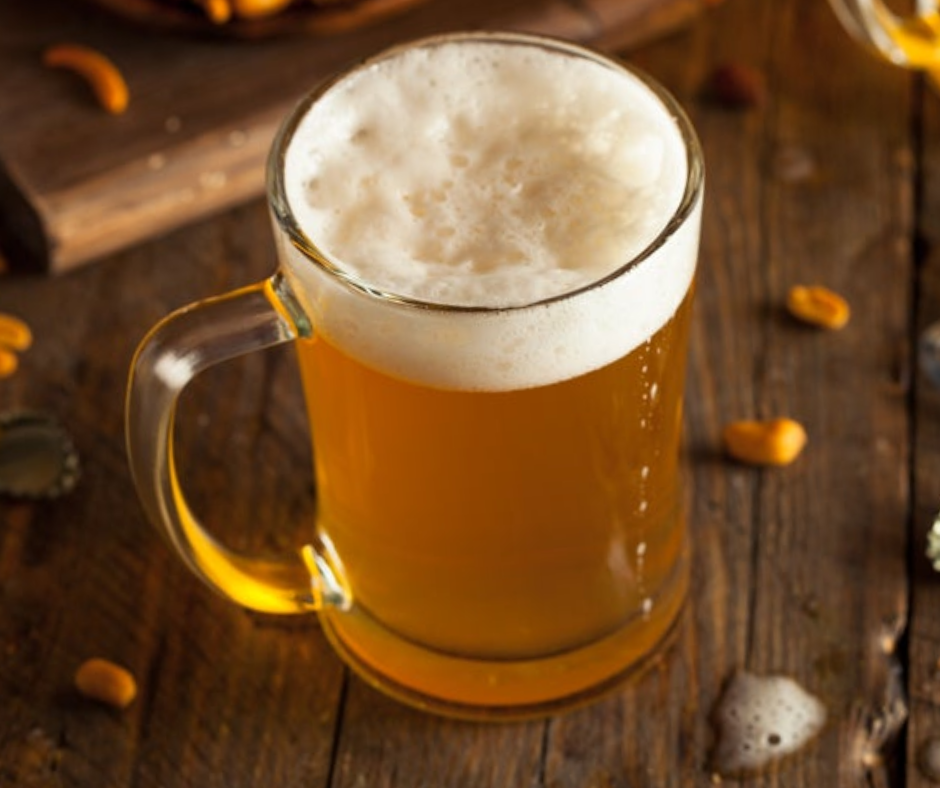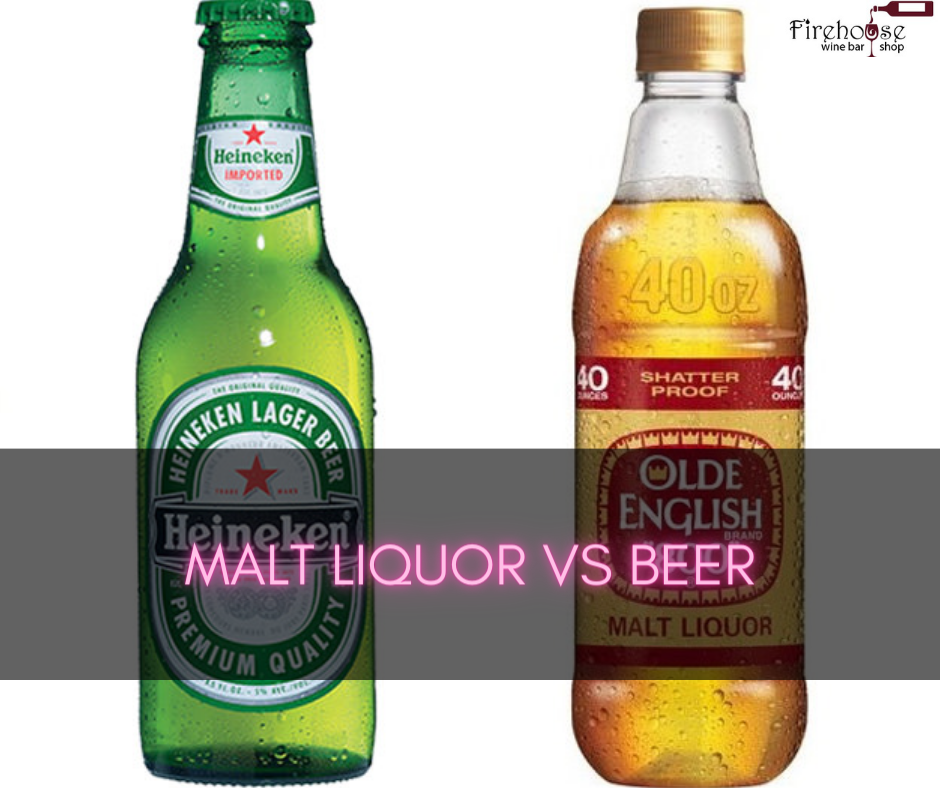Introduction
Malt liquor and beer are two popular alcoholic beverages that are enjoyed by many around the world. While they both fall under the beer category, there are some key differences between them. This article will explore the nuances of Malt Liquor vs Beer, their brewing processes, and the variations in taste and alcohol content.

Understanding Malt Liquor And Beer
Malt liquor is a type of beer that is typically high in alcohol content. It is brewed using malted barley and often augmented with corn, rice, or other fermentable sugars. Malt liquor tends to have a sweeter and stronger taste than regular beer. It is available in larger bottle sizes and is often associated with a lower price.
On the other hand, beer is a broad term encompassing many styles and flavors. It is brewed using malted grains, hops, water, and yeast. Different brewing techniques and ingredients result in the vast array of beer varieties available. Beer usually has a lower alcohol content than malt liquor and comes in various bottles and can sizes.
Malt Liquor vs Beer: Exploring The Differences
The most noticeable difference when you compare Malt Liquor vs Beer is the alcohol content. Malt liquor typically has a higher alcohol content, ranging from 6% to 10%, while beer typically falls from 4% to 8%. This higher alcohol content in malt liquor is achieved through additional fermentable sugars during brewing.
Another difference lies in the brewing process. Malt liquor is often subjected to a longer fermentation period and sometimes undergoes “lagering,” where it is stored at colder temperatures for an extended period. This results in a smoother and cleaner taste compared to regular beer.
Regarding taste, malt liquor tends to have a sweeter and maltier flavor than beer. The additional sugars used in the brewing process contribute to this sweetness. Malt liquor also tends to be fuller-bodied, giving it a heavier and more robust mouthfeel. On the other hand, beer can vary in taste depending on the style, ranging from light and crisp to rich and hoppy.
The packaging and marketing of Malt Liquor vs Beer also differ. Malt liquor is often associated with larger bottle sizes, such as 40-ounce bottles, and is targeted towards a demographic seeking a high-alcohol, low-cost beverage. On the other hand, beer comes in various packaging options, including bottles, cans, and kegs, catering to a wide range of consumers and occasions.
In conclusion, malt liquor and beer are two distinct brews within the beer category. Malt liquor is characterized by its higher alcohol content, sweeter taste, and larger bottle sizes. On the other hand, beer offers a wide range of styles and flavors catering to different preferences. Whether you prefer the boldness of malt liquor or the versatility of beer, both options provide an enjoyable drinking experience for beer enthusiasts.
Malt Liquor
What Is Malt Liquor?
Malt liquor is a beer known for its higher alcohol content and sweeter flavor profile. It is brewed using malted barley and often supplemented with corn, rice, or other fermentable sugars. The addition of these sugars increases the alcohol content, making malt liquor stronger compared to regular beer.
Malt liquor is usually available in larger bottle sizes, such as 40-ounce bottles, and is often associated with a lower price point. It has gained popularity among certain demographics seeking a high-alcohol, low-cost beverage. However, it is important to consume malt liquor responsibly and be aware of its higher alcohol content.
Malt Liquor’s Higher Alcohol Content And Flavor Profile
One of the key differences between malt liquor and beer is the alcohol content. Malt liquor typically has a higher alcohol content, ranging from 6% to 10%, compared to beer, which usually falls in the range of 4% to 8%. The higher alcohol content in malt liquor is achieved by adding extra fermentable sugars during brewing.
This higher alcohol content gives malt liquor a stronger and more potent kick than regular beer. Consumers need to be aware of this and consume malt liquor in moderation. The higher alcohol content also contributes to the sweeter flavor profile of malt liquor. The additional sugars used in the brewing process give it a distinct sweetness that sets it apart from traditional beer.
Regarding taste, malt liquor is often described as having a maltier and fuller-bodied flavor profile. The additional sugars used in the brewing process contribute to the sweetness and give it a heavier mouthfeel. Malt liquor enthusiasts appreciate these characteristics and enjoy the bolder and more robust taste than regular beer.
Notably, malt liquor is not as diverse in styles and flavors as beer. While beer offers a wide range of styles and taste profiles, malt liquor has a more limited range of options. However, within its niche, malt liquor continues to appeal to those who enjoy a stronger and sweeter beer experience.
In conclusion, malt liquor and beer are two distinct brews that cater to different preferences. Beer offers many styles and taste profiles, accommodating a wide range of consumers. Malt liquor, with its higher alcohol content and sweeter flavor profile, appeals to those seeking a more robust beer experience. Both options provide unique drinking experiences and can be enjoyed responsibly.

Beer
Crafting Beer: Ingredients And Fermentation Process
Beer is a widely consumed alcoholic beverage that is crafted through a fermentation process. Its ingredients typically include malted barley, water, hops, and yeast. The malted barley provides the sugars necessary for fermentation, while hops contribute bitterness and aroma. The yeast consumes the sugars, converting them into alcohol and carbon dioxide.
The fermentation process for beer usually occurs in stainless steel tanks, where the yeast acts on the sugars to produce alcohol and carbon dioxide. This process can take a few days to several weeks, depending on the desired flavor and alcohol content. After fermentation, the beer is often conditioned for additional maturation before being packaged and distributed.
Beer’s Variety Of Styles And Taste Preferences
One of the defining characteristics of beer is its incredible diversity in styles and taste preferences. From light lagers to hoppy IPAs, there is a beer style to suit nearly every palate. Craft breweries have contributed to this variety by experimenting with different ingredients, brewing techniques, and flavor combinations.
Beer styles can be categorized based on color, flavor profile, strength, and origin. Some popular beer styles include pale ale, stout, wheat beer, pilsner, and amber ale. Each style offers a unique taste experience, from a lager’s crisp and refreshing nature to the bold and complex flavors of a barrel-aged stout.
Beer’s versatility allows for a wide range of taste preferences to be catered to. Whether someone enjoys a light, easy-drinking beer or prefers a rich and full-bodied brew, the beer market has something for everyone.
Malt Liquor vs Beer: A Comparison
Regarding fermented beverages, malt liquor and beer are two popular choices with unique characteristics that appeal to different tastes. This comparison will explore the key differences in the debate of Malt Liquor vs Beer, including the crafting process, variety of styles, taste preferences, packaging, serving sizes, and occasions they are best suited.
Distinguishing Packaging And Serving Sizes
One of the noticeable differences between malt liquor and beer lies in their packaging and serving sizes. Beer is commonly found in bottles, cans, and occasionally on tap in bars or restaurants. These packaging options range from small 12 oz bottles/cans to larger 16 oz or 22 oz bottles/cans, with some craft breweries offering even larger sizes.
Malt liquor, on the other hand, is typically packaged in larger and more distinctive containers. It is often associated with 40 oz bottles or cans. These larger serving sizes are commonly consumed by groups or individuals seeking a more substantial drinking experience. The distinctiveness of malt liquor packaging adds to its identity and separates it from regular beer.
Different Occasions And Preferences For Malt Liquor And Beer
Malt liquor and beer have different occasions and preferences associated with them. Beer is known for its versatility and wide range of styles that cater to various occasions. It is commonly enjoyed at social gatherings, sporting events, barbecues, and casual nights out. Beers come in different flavors and strengths, offering something for everyone’s tastes. Whether someone prefers a light and crisp lager or a hoppy and bold IPA, beer has options for all flavor profiles.
Malt liquor, on the other hand, is often associated with specific occasions that call for a more robust beer experience. It is popular among individuals seeking a higher alcohol content in their drink or for special celebrations. Malt liquor is sometimes consumed as a budget-friendly option due to its larger serving sizes. It is often enjoyed in a relaxed setting among friends or during certain cultural festivities.
While beer is widely appreciated and enjoyed by a broader audience, malt liquor has a niche following among those seeking a stronger and sweeter beer experience. The preference for malt liquor often stems from personal taste preferences and individual palates.
In conclusion, malt liquor and beer are two distinct brews catering to different preferences and occasions. With its wide variety of styles and flavors, beer is versatile and enjoyed in various social settings. Malt liquor, known for its higher alcohol content and distinctive packaging, appeals to individuals seeking a more robust beer experience. Both options provide unique drinking experiences and can be enjoyed responsibly based on individual preferences and occasions. Whether a refreshing beer on a hot summer day or a malt liquor shared among friends, these brews offer diversity and choices for all beer enthusiasts.

Conclusion
Now you know how to compare Malt Liquor vs Beer. Both are distinct brews catering to different preferences and occasions. While malt liquor is known for its higher alcohol content and distinctive packaging, beer offers versatility with various styles and flavors. Both options provide unique drinking experiences and can be enjoyed responsibly based on individual preferences and occasions.
Malt Liquor And Beer: Catering To Different Palates
Malt liquor appeals to individuals seeking a more robust beer experience. Its higher alcohol content provides a bolder taste and a more substantial drinking experience. The larger serving sizes, such as the popular 40 oz bottles or cans, add to the identity of malt liquor and differentiate it from regular beer. This makes malt liquor a preferred choice for occasions that require a stronger beer, such as special celebrations or relaxed gatherings among friends.
On the other hand, beer caters to a wider range of tastes and preferences. With its various styles and flavors, beer offers options for everyone’s palate. Whether someone prefers a light and crisp lager or a hoppy and bold IPA, there is a beer to satisfy every taste preference. Beer is versatile and can be enjoyed in various social settings, such as social gatherings, sporting events, barbecues, or casual nights out.
Craft Beer: Expanding Flavor Options For Beer Enthusiasts
One aspect of the beer world that has seen significant growth in recent years is craft beer. Craft breweries have revolutionized the beer industry by offering various unique flavors and styles. Craft beer enthusiasts enjoy exploring different flavors, experimenting with ingredients, and appreciating the craftsmanship behind each brew.
Craft beer has expanded the flavor options available to beer enthusiasts, allowing them to explore new taste profiles and indulge in creative combinations. From fruity and hazy IPAs to rich and complex stouts, craft beer provides endless possibilities for those seeking a more artisanal beer experience. The craft beer movement has also increased appreciation for quality ingredients and brewing techniques.
In conclusion, malt liquor and beer are two distinct brews that serve different purposes and cater to different palates. Malt liquor provides a more robust beer experience, while beer offers versatility with various styles and flavors. Both options have unique characteristics and can be enjoyed responsibly based on individual preferences and occasions. Whether it’s the boldness of malt liquor or the diversity of craft beer, there is something for every beer enthusiast to enjoy.
FAQ: Malt Liquor vs Beer – A Comparison of Two Brews
Q: What are the main differences when comparing Malt Liquor vs Beer?
A: Malt liquor and beer differ in several aspects. They have different brewing processes, alcohol contents, flavor profiles, and marketing strategies.
Q: How are malt liquor and beer brewed differently?
A: Both malt liquor and beer are brewed using similar processes. However, malt liquor contains higher amounts of fermentable sugars and adjuncts, such as corn or rice, to increase its alcohol content.
Q: Are there any differences in the packaging of malt liquor and beer?
A: Malt liquor typically comes in larger bottles or cans than beer. Some companies even offer sizes of 40 ounces or larger for malt liquor.
Q: Can you describe the flavor profiles of malt liquor and beer?
A: Malt liquor can have a full-bodied and sweet flavor, which some may enjoy but consider overpowering or excessively sweet to others. On the other hand, beer comes in various styles like lagers, ales, stouts, and porters, each with unique flavor characteristics.
Q: What is the typical difference in alcohol content between malt liquor and beer?
A: Malt liquor usually has an alcohol by volume (ABV) ranging from 5-6%, while beer can have a broader range of 4-12% ABV.
Q: Are there any well-known brands of malt liquor?
A: Yes, some well-known brands of malt liquor include Colt 45, Steel Reserve, Mickey’s, and Olde English 800.
Q: Are there any associations between malt liquor and beer consumption settings?
A: Beer is often consumed in public places like bars, restaurants, and gatherings with loved ones. Malt liquor, on the other hand, is commonly associated with solitary drinking or consumption in less sociable settings.
Q: Why is understanding the differences between malt liquor and beer important for consumers?
A: Understanding the differences between malt liquor and beer can help consumers make informed choices about what they drink and how they consume it, allowing them to select beverages that best suit their preferences and social settings.
Q: Where can I find more information about malt liquor and beer?
A: You can find more information online through independent blogs, articles, and resources that discuss brewing, flavors, and differences between malt liquor and beer.

Andre Lotz immigrated to the United States from South Africa almost 20 years ago. Still, he didn’t feel truly at home until he settled in Mobile—a city that reminds him of his childhood home of Fish Hoek on the southern cape of Africa.

